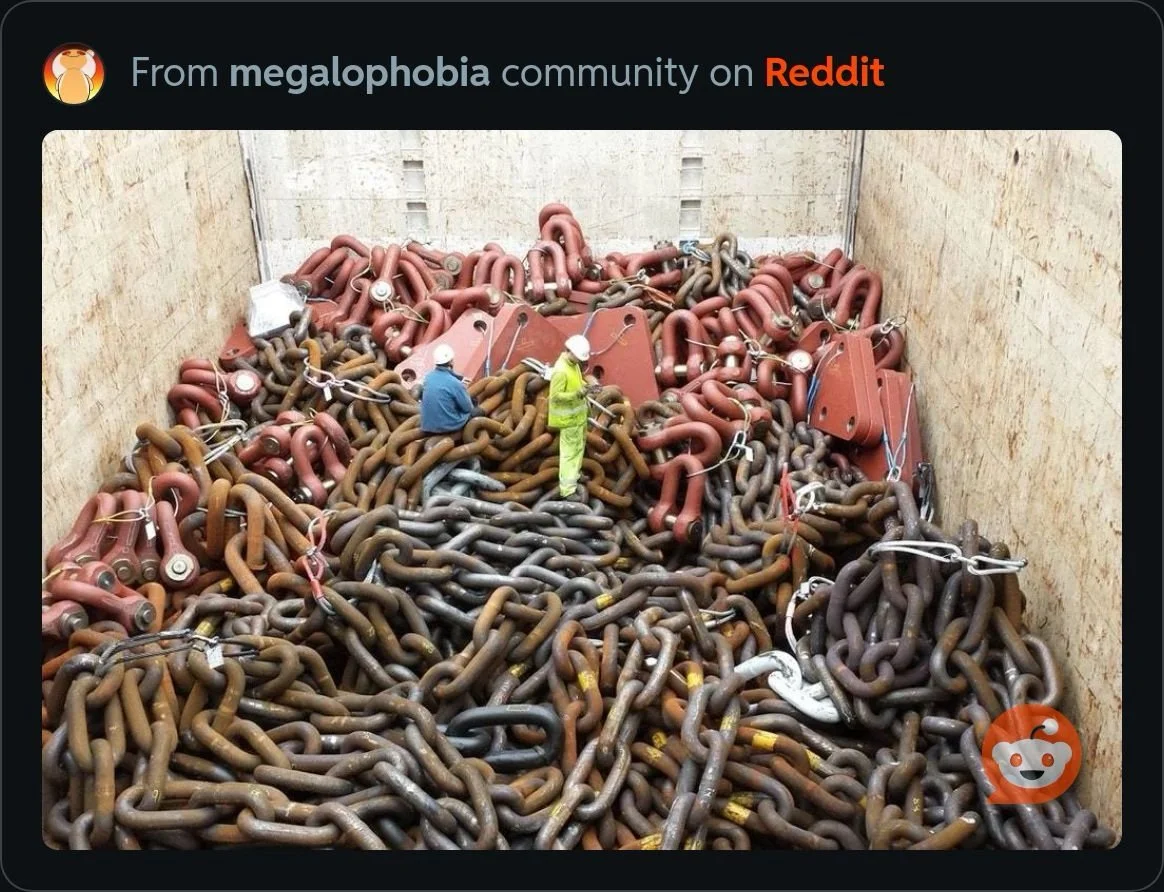- cross-posted to:
- globalnews
- cross-posted to:
- globalnews
Summary
Taiwan’s coastguard detained a Togolese-flagged cargo ship with a Chinese crew after an undersea communications cable connecting Taiwan to Penghu was cut.
Authorities suspect a possible “grey zone” act—hostile interference short of warfare—by China but have not ruled out an accident.
The ship, which initially ignored radio contact, was intercepted and escorted to port. Taiwan has been monitoring Chinese-linked vessels under flags of convenience due to previous cable damage incidents.
Chunghwa Telecom activated a backup cable, preventing communication disruptions.
Following the same playbook as ruzzia
At least some of these are accidental, because ships have damaged cables for a long time. Europe’s stopped several ships that have caused damage, had physical access to the ship, and I have yet to heard of one where law enforcement actually wound up saying “we conclude that this was an intentional cut”.
There have definitely been cases where important people have said that they believe that cuts are intentional, but those were not speaking of situations where their investigators had actually come to that conclusion after looking at the ship in a specific incident and asking questions of the crew:
https://www.cnn.com/2024/11/20/world/accident-or-sabotage-undersea-cables-intl/index.html
European leaders were quick to voice their suspicions. Germany’s Defense Minister Boris Pistorius said that “nobody believes that these cables were accidentally severed.”
The foreign ministers of Finland and Germany said in a joint statement that they were “deeply concerned” about the incident and raised the possibility that it was part of a “hybrid warfare,” specifically mentioning Russia in their statement.
Their assessment was not plucked out of thin air. Russia has been accused of waging a hybrid war against Europe after a string of suspicious incidents, arson attacks, explosions and other acts of sabotage across multiple European countries were traced back to Moscow.
And the disruption to the cables came just weeks after the US warned that Moscow was likely to target critical undersea infrastructure. This followed months of suspicious movements of Russian vessels in European waters and the significant beefing up of a dedicated Russian secretive marine unit tasked with surveying the seabed.
But two US officials familiar with the initial assessment of the incident told CNN on Tuesday the damage was not believed to be deliberate activity by Russia or any other nation.
Instead, the two officials told CNN they believed it likely caused by an anchor drag from a passing vessel. Such accidents have happened in the past, although not in a quick succession like the two on Sunday and Monday.
The Kremlin on Wednesday rejected the “laughable” suggestions that it was involved, saying it was “absurd to keep blaming Russia for anything without any grounds.”
I can’t find much by way of a graph of submarine cable severing frequency by year, but this (which only shows older years) at least does illustrate that this isn’t a new phenomenon:
https://iscpc.org/publications/icpc-viewpoints/damage-to-submarine-cables-from-dragged-anchors/
Damage to submarine cables from dragged anchors account for approximately 30% of incidents each year representing around 60 faults. Damage to these cables is costly, with telecommunication repairs averaging £500k-£1m per incident and power cable repair costs reported to be in the region of £10m-£100m per incident depending on many variables. Downtime from cable damage has the potential to cause disruption to global communications and energy transmission and distribution.
- One of the most significant anchor drag events in recent history occurred off Sicily in 2008, where a ship dragged its anchor for 300 km, damaging six submarine cables. Such incidents can disrupt multiple cables in proximity, magnifying the impact of an event2 [?].
- Another example is the incident between the Channel Islands and Cornwall, UK where a vessel deployed anchor in poor weather, causing damage to several telecommunications cables3 .
- There was another incident on 17 March 2016 where a vessel dragged its anchor causing damage to telecommunications cables and a power cable, which cut off the electricity supply to the Isles of Scilly4 for a significant period of time.
- The Chilean flag container ship Aconcagua cut three of the then 4 cables linking the United States to Europe in 2002 while sailing from Philadelphia to New York City. The captain erroneously attributed the reduction in the ship’s speed during a gale to the wind when in fact it was the ship’s anchor dragging. Investigation revealed that the anchor windlass had only been secured with the brake and the chain stopper had not been used.
- The Liberian flagged vessel Blue Princess damaged three submarine cables in the Red Sea in 2012. Over a period of 12 hours on 17th February 2012, SEA-ME-WE 3, EASSy, and EIG, causing multiple cable faults. The vessel could be tracked using AIS as crossing the cables at a similar time as faults were reported and appeared to become fastened to the cable with the speed reducing to zero at the time of the final fault during that period.
This is not in any way to discount the possibility that a state could intentionally attack submarine cable infrastructure, which is vulnerable. In the past, cutting cables has been a feature of wartime activity. We have linked Russian intelligence to a set of arson attacks in Europe, so it’s not as if there isn’t a willingness to cause damage. But (a) ships do regularly cause damage to submarine cables and (b) there hasn’t yet been a smoking gun indicating that an investigated cut that has occurred has been intentional.
I get an incredulous “how do you manage to haul your ship’s anchor for hundreds of kilometers and through a number of submarine cables without noticing? What kind of captain are you?” But…people have managed to do so in the past.
Intentional or not is irrelevant. Damaging critical national infrastructure through negligence should still be considered a criminal act with mandatory prison time for the negligent captain and navigator(s), and a heavy fine assessed against the shipping company.
What kinds of repercussions do these cases have right now?
Intentional or not is irrelevant.
Unintentional damage still creates problems, sure. But there are ways to mitigate unintentional damage (e.g. trying to revise ship systems to better warn about a dropped anchor or rules on where to anchor), having it be protocol for shore stations to warn ships with AIS that they’re stopped near cable lines, or clustering cables tightly together and focusing on getting people to not anchor right there that don’t work for intentional damage. Maybe push for minimal international standards on crew training — you maybe can’t ban ships from sailing in international waters, but you can restrict who docks at your ports and can agree with other countries to impose similar requirements.
If your risks are intentional cuts, then you have to deal with a lot of other difficult issues, like “what happens if the state just falls back to using something like underwater drones instead of freighters”. And there are approaches that work for intentional cuts that don’t work for unintentional cuts, like deterring a country by threatening it with serious counteraction if it attacks submarine infrastructure.
So if you’re trying to deal with the problem, you are going to care whether you need to worry about peacetime intentional damage or just unintentional damage. Now, okay, you do still have to be aware that a country could go out and cut cables in a war. Intentional damage is always going to be something to keep in mind. But whether-or-not day-to-day intentional damage is occurring should impact how one responds to peacetime cuts.
My point is that regardless of whether investigators say “this ship tore cables intentionally” or “oops, they screwed up”, penalties need to apply so that:
A) Insurance rates reflect these risks
B) Operators are incentivized to care about not damaging undersea cables
C) Intentional damage will be more obvious, because shipping companies won’t want to risk getting dropped from their insurance for repeat expensive cable cut offenses. (This kind of insurance is mandatory for major shipping ports to allow those ships to dock.) Bad actors will have to use other means to destroy these cables that cannot be easily blamed on negligence.
I’m not an expert, but that may not be entirely feasible. Accidents happen. Even if you want to designate no anchoring zones, what about in a bad situation? What if the cable is new and the boat is using maps a year or two old? Do the maps those boats use even include these cables so they can even try to avoid them? Who enforces it in international waters? It’s messy.
Is there even any reason to be dragging your anchor? Isn’t the whole point that you put down the anchor when you are trying to stay still?
You can drag an anchor when you’re trying to stay still and the anchor just isn’t, well, anchored; my understanding is that bad weather can cause that.
But some of the above incidents I listed are ships that have their anchor released and are just continuing to sail along while apparently unaware of the fact that they’re hauling an anchor right through the submarine cables that they cross. Like, they aren’t victims of bad weather+bad luck. They’re just screwing up.
So they should pay for it, with jail time if need be.
Negligence isn’t an excuse, it’s a crime.
Sure, but will the ocean let your boat stay still? Waves get really big, and storms can lead to intense winds. I don’t see it as entirely unreasonable for these accidents to happen. They should be rare, but with the volume of ocean traffic we have, they kind of are. That isn’t to say we couldn’t do better, but I’m not sure this is a problem that can be 100% solved.
Sure but when you have people dragging their anchor for 300km it certainly seems like negligence at best
People underestimate the sheer size and volume of ship anchors.
It’s not the hooky bit that ye olde sailors tattooed on their arm that holds the ship like a fishhook.
It’s the literal hundred metres of VERY heavy chain that does it. Unless it’s your first time behind the wheel it’s impossible not to notice you’re dragging an anchor.
This is the scale we’re talking about.

Damage is damage. You are not getting away cutting someone car by chainsaw and saying “oh it was an accident. It so unfeasible to follow all those safety rules”
You can’t see the cables from the surface. If the maps don’t include them, which was a point I already made, they may have no idea at all what they’ve done, and they may not have any reasonable way at all to predict it. There’s almost 200 million square miles of ocean. How likely do you think it is to drop anchor on a cable? It’s not a reasonable concern a huge portion of the time, and, again, I’m not convinced they know they’re there.




